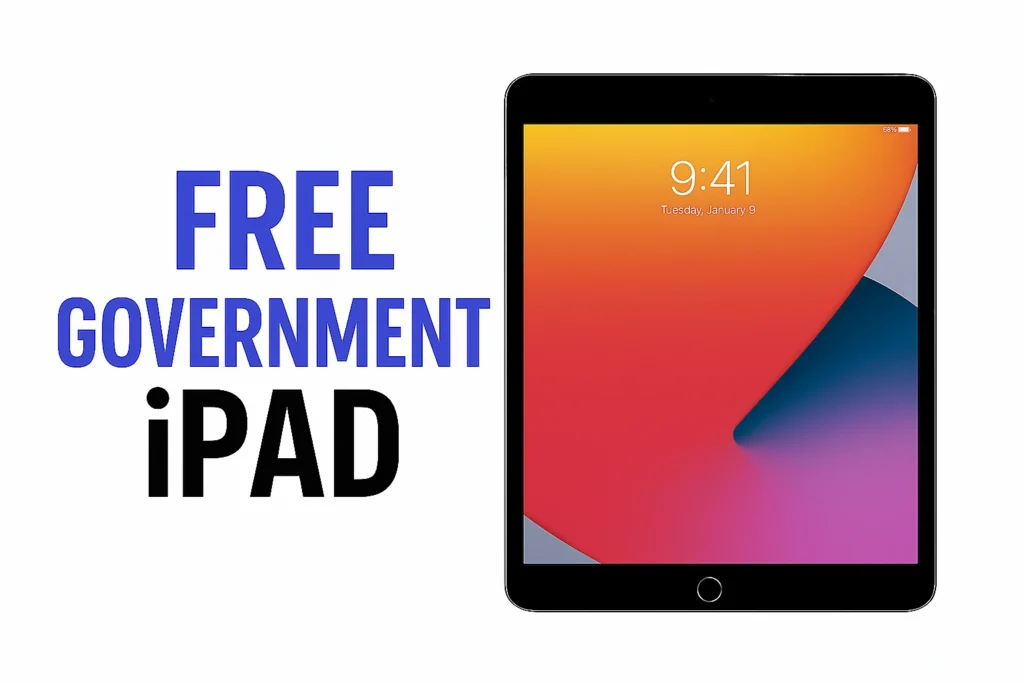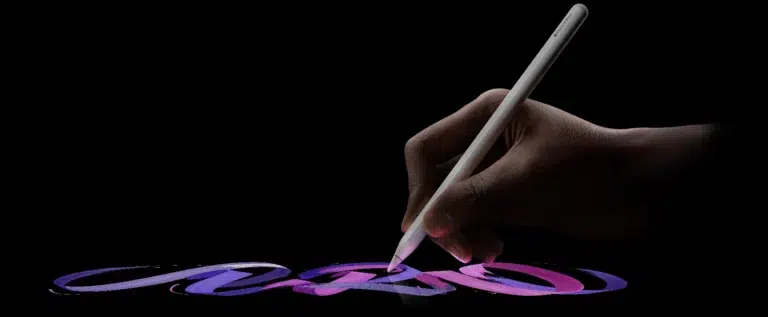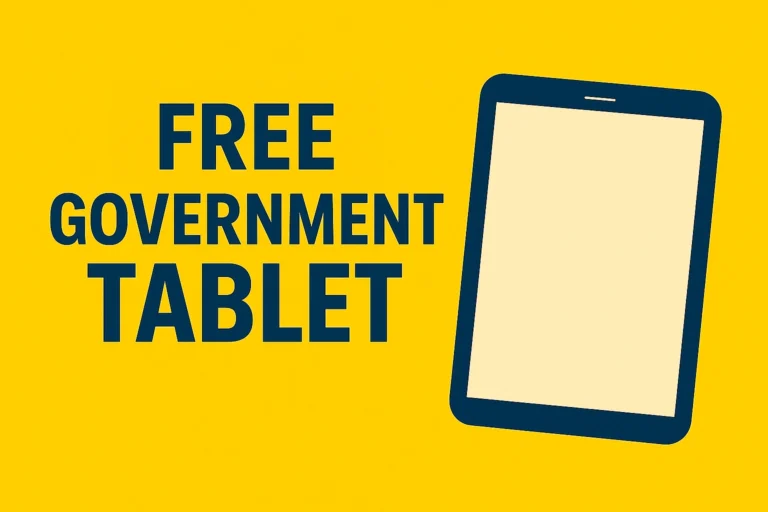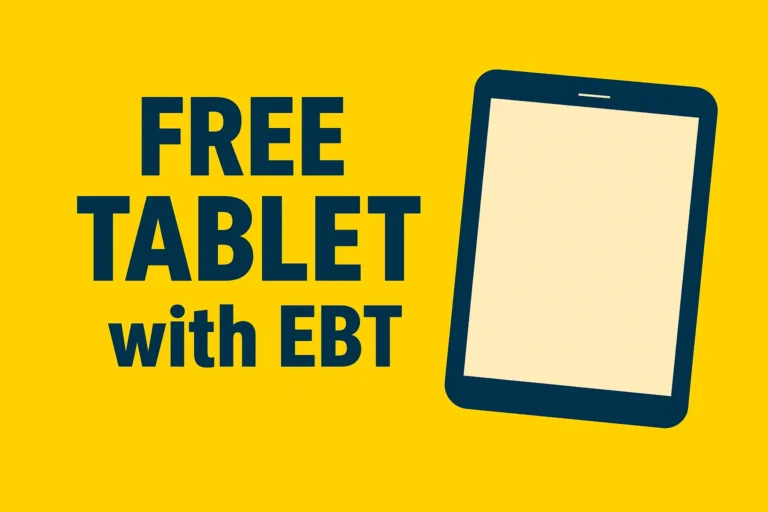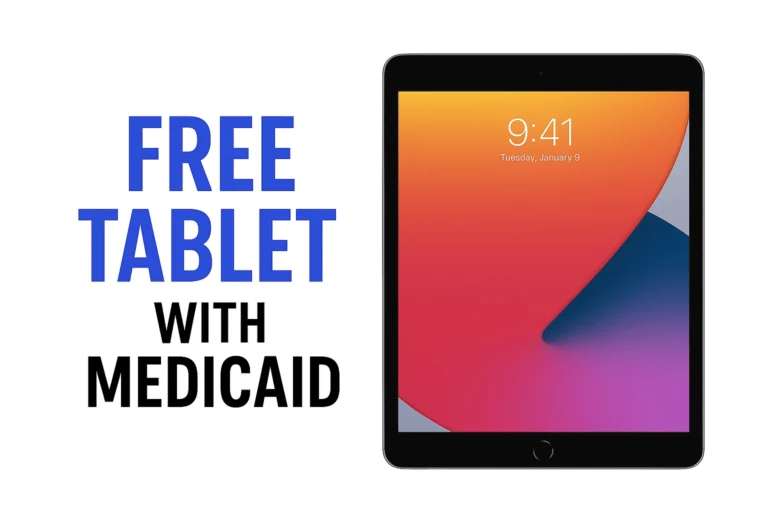Table of Contents
Many families, students, and seniors still lack a tablet — a device that can unlock education, telehealth, and job tools. Use this guide to find low-cost and no-cost options, understand eligibility (SNAP, Medicaid, EBT, Lifeline), and apply for a subsidized or free device from verified providers.
If you rely on SNAP, EBT, or Medicaid, the price often puts a tablet out of reach, yet having one can change how you learn, attend appointments, search for work, and stay close to family. Many websites promise help but end up offering confusing advice or broken links. After you click through them, you may still not know who to trust or what to do next.
We will provide every detail and follow you to get a free government iPad. You’ll get clear eligibility checks, the exact documents you need, and step-by-step application directions that match your state.
Read on and you’ll know if you qualify, where to apply, and how to finish the process so you can get a free or low-cost iPad for school, telehealth, work, or staying connected.
Most Authentic Free Government iPad Programs?
Free iPads and that too from the government? Sounds too good to be true, right? But it’s 100% real.
Here’s a list of renowned programs that individuals should know if they need to secure low-cost and free tablets:
- The Lifeline Assistance Program
- Provider offers tied to SNAP, Medicaid, EBT, or SSI
- State and Local Digital Inclusion Initiatives
Let’s break them down so you know exactly where to look and how to qualify for a free Apple ipad.
1. Lifeline Assistance Program
This famous federal program provides $9.25 monthly for phone and internet services to low-income households. These days, many providers feed that support into free lifeline iPad or tablet offers, bundled with Lifeline service. It’s one of the clearest pathways to get a free government iPad, especially when teamed with eligibility from SNAP, Medicaid, or other programs.
This is a primary route for those seeking a free iPad with service or free government phone and iPad.
2. Offers Linked to SNAP, Medicaid, EBT, or SSI
Most of the queries are usually around:
- Is it possible to get a free iPad for SNAP recipients?
- Can I get a free iPad with EBT?
- How can I get a free iPad with a Medicaid card?
However, many of the references fail to provide straightforward answers to these questions. But it’s simple. These programs basically act as proof of eligibility, not as direct sponsors.
For example, if you are already receiving benefits through SNAP, Medicaid, EBT, or SSI, you automatically become eligible to apply for government-funded free phones and tablets. However, it doesn’t mean this is the only criterion. Still, we can say that having one of these benefits covers about 50-60% of the eligibility path, since providers usually require additional documents like proof of income or residence.

3. State or Local Digital Inclusion Programs
In addition to federal initiatives, some states, nonprofits, schools, and local organizations offer tech assistance programs especially targeting students, seniors, veterans, or low-income families. Often, these programs provide tablets or laptops, sometimes including iPads, for free, especially in education or veteran support services.
4. The Affordable Connectivity Program (ACP)
Disclaimer – The ACP is not active right now and has officially expired in June 2024. The information below is only provided for general awareness.
The Affordable Connectivity Program was one of the most popular federal programs that helped in getting free iPads for low-income families and discounted internet service without any hidden costs. People with limited financial budgets and eligible households those on SNAP, Medicaid, EBT, or SSI) could receive:
- A $30 monthly, or $75 for households on Tribal lands, is allotted for internet and service.
- $100 discount on a tablet, laptop, or iPad is given through partnered providers.
Although ACP is no longer active as of 2024, many people still search for it when looking to apply for free government iPad programs. That’s why it’s useful to know that its role has now been mostly replaced by Lifeline, state-level programs, and provider offers that continue to help eligible individuals.
Use USA.gov’s Benefit Finder to see what help you qualify for
Answer a few quick questions and the Benefit Finder creates a customized list of federal and state programs you may be eligible for, with links and application steps. USAGov
How to use:
-
Click the Benefit Finder link on USA.gov.
-
Pick a life event (disability, death of a loved one, or retirement) or search by category.
-
Answer simple questions about your household and situation.
-
Review the tailored list of benefits and open any program page for details and how to apply.
Where to look for device or connectivity help
When you run the tool, check categories such as Education, Food, Health, Housing & utilities, and Welfare/Cash assistance — those often list programs, local nonprofits, or vouchers that can help with devices or internet access.
Eligibility Criteria for Free Government iPad
As we’ve already discussed, free or discounted iPads aren’t very common. However, when they are offered, providers follow a specific eligibility criteria. We’ve categorized this criterion so it’s easier for you to understand:
1. Income Standards
- Your household income must generally be 135% or less of the Federal Poverty Level (FPL).
- Some providers extend the limit to 200% of FPL, depending on the state.
These programs are mainly designed to offer free iPad for low income households and students who cannot afford expensive Apple devices. So if your income falls within these limits, you stand the best chance of being approved.
2. Participation in Assistance Programs
You may also qualify automatically if you’re enrolled in one or more government programs:
- SNAP (Food Stamps)
- Medicaid and Medi-Cal
- Supplemental Security Income (SSI)
- Temporary Assistance for Needy Families (TANF)
- Electronic Benefit Transfer (EBT)
- Lifeline Assistance
These programs are specifically designed for less privileged individuals and households, so being an active participant in any of them already gives you a standalone chance of becoming eligible to get an iPad for free.
3. Residency and Age
- You need to be a legal resident of the United States or its territories (such as Puerto Rico, Guam, or the U.S. Virgin Islands).
- Your chosen Lifeline provider must offer services in your state of residence.
- The age limit for applicants is above 18 years.
- Minors may apply through a parent/guardian or with emancipation proof.
4. Special Groups That Qualify
Some groups have special pathways to eligibility for a free iPad from Government:
- Students & College Applicants – May qualify through Pell Grants or household income.
- Minors – Covered if their household already qualifies for SNAP, Medicaid, etc.
- Seniors – Often eligible through SSI, Medicaid, or retirement-based benefits.
- Veterans – Eligible through Veterans Pension or Survivor’s Pension.
- Disabled Individuals – Covered via SSI or Medicaid disability benefits.
Documents Required for Free Government iPad Application
To successfully apply for a free or discounted iPad through government programs like Lifeline or ACP (when it was active), you’ll need to submit valid documents. These documents serve as proof of your eligibility and may vary slightly depending on the provider. Generally, they fall into the following categories:
1. Proof of Identity
- Valid government-issued photo identification (such as a driver’s license, state-issued ID card, passport, or military ID).
- Birth Certificate if applying for a minor through a parent/guardian
2. Proof of Residency
- Recent utility bill including gas, electricity, and internet
- Lease or mortgage statement
- Official government correspondence with your current address
3. Proof of Income
- Recent federal or state tax return
- Pay stubs from the last three months
- Unemployment benefit statement
4. Proof of Participation in Assistance Programs
- SNAP/EBT card or approval letter
- Medicaid card or letter of enrollment
- SSI, TANF, or Veterans Benefit statement
- Lifeline program approval letter
Lifeline Providers Offer Free iPads
There are many Lifeline providers who provide iPads to eligible users — availability depends on location and income. Qualifying paths often include EBT/SNAP, Medicaid, SSI, veteran benefits, Pell/FAFSA, or other low-income programs. We’ll guide you A–Z to claim a free iPad bundled with internet service.
How it works:
-
Lifeline is a service discount — it does not directly mail devices.
-
Participating carriers use your Lifeline eligibility as proof to offer promotional or discounted iPads with a data plan.
-
Offers vary by provider, region, and stock; some devices are free, others are heavily discounted or refurbished.
Quick A–Z steps we’ll walk you through:
-
Confirm your eligibility.
-
Gather ID and benefit proof.
-
Compare Lifeline partners in your area.
-
Read terms (activation, fees, contract length).
-
Apply and claim the iPad.
-
Receive, inspect, and activate the device.
Tip: always verify the offer on the provider’s official site and never pay a third party for a “government” iPad.
Does Lifeline Assistance Program Offer Free iPads?
A bold no. The Lifeline Assistance Program is not a direct provider of free iPads, nor is it a sponsor for any such activity. It’s simply a platform that offers discounted phone and internet services, and it has never directly given a laptop, phone, or iPad to anyone for free.
You might be losing hope now. But the thing is, getting a free iPad is still possible and within your reach.
Many providers who participate in the Lifeline Program, like AirTalk, Cintex, and Q Link, use your Lifeline eligibility as proof and then offer low-cost or sometimes free devices with data plans, including laptops, phones, and sometimes iPads. So, that’s how you get it for free.
Lifeline Providers That Offer Free or Discounted iPads
| Provider | What They Offer | Eligibility Requirements | iPad Availability |
| AirTalk Wireless | Free or low-cost smartphones and tablets | Lifeline-eligible (SNAP, Medicaid, SSI, FPHA or 8 Section, TANF, WIC THS, etc.) | Android tablets, iPads, Glaxy Tablets, and Phones |
| Cintex Wireless | Free smartphones and tablets | Lifeline-eligible (SNAP, Medicaid, SSI, FPHA, Veterans) | Occasional iPad availability |
| StandUp Wireless | Lifeline plans with data and devices | Lifeline-eligible (SNAP, Medicaid, SSI, FPHA, Veterans) | Bring own device, promos are rare |
| Tag Mobile | Lifeline service with devices (incl. iPads) | Lifeline-eligible (SNAP, Medicaid, SSI, Section 8) | Highly limited, selected users, Available iPhone 7, C300 Nokia |
| Q Link Wireless | Free phone and data plans with tablets | Lifeline-eligible (SNAP, Medicaid, SSI, Veterans) | No new tablets/iPads in 2025 |
Editor’s Pick: AirTalk Wireless
AirTalk Wireless is widely regarded as the most trusted provider for free or discounted government iPads in 2025. They offer recognized brand-name devices, including the Apple free iPad Mini and iPad Air available at a small co-pay (around $10.01), depending on stock and eligibility.
Serving over 30 states with reliable AT&T and T-Mobile networks, AirTalk provides a transparent and streamlined application process, earning consistently positive reviews for customer experience and clear information about eligibility, copays, and plans.
AirTalk Wireless
AirTalk Wireless operates as a federally recognized provider offering services through the Lifeline and Affordable Connectivity Program. They go beyond free iPad service, you can also find offers for free laptops, tablets, Phones, and smartphones, including iPhones.
How Can You Qualify:
You can apply if you’re part of government programs such as EBT/SNAP, Medicaid, SSI, or Medicare. Households that meet income-based guidelines may also qualify.
Devices You Can Get:
AirTalk Wireless is best known for free smartphones, but they also provide a wide range of devices. Depending on availability, you could receive a refurbished laptop, tablet, iPad, iPhone, or even Samsung devices. Most customers pay a very small co-payment or sometimes nothing at all.
How Can You Apply:
Applications are completed online at the AirTalk Wireless website. You’ll need to upload proof of your eligibility, like an EBT card or benefits letter. Once submitted, approval usually takes a few days to a week.
Where You Can Find Available:
Applications are completed online at the AirTalk Wireless website. You’ll need to upload proof of your eligibility, like an EBT card or benefits letter. Once submitted, approval usually takes a few days to a week.
Q Link Wireless
Q Link Wireless is a certified Lifeline provider that mainly offers free iPad and Phone service, but they also have programs where qualified customers can receive tablets, laptops, or smartphones. Sometime, iPads or iPhones are included in special offers.
How You Can Qualify:
Eligibility is based on programs like EBT/SNAP, Medicaid, SSI, or income at or below federal poverty limits.
Devices You Can Get:
Q Link Wireless usually provides a free smartphone, but in some cases, they also offer discounted tablets, laptops, iPads, or iPhones. These are usually one-time benefits and depend on stock.
How Can You Apply:
Check eligibility by entering your ZIP code on the Q Link Wireless website. You’ll then upload proof of your program participation or household income.
Assurance Wireless
Assurance Wireless is a well-known Lifeline provider that mainly give free smartphones with monthly talk, text, and data. While laptops are rare, they mostly provide tablets, iPads, or iPhones during special promotions.
How Can You Qualify:
You are eligible if you receive benefits from programs such as SNAP/EBT, Medicaid, SSI, or if your household income meets federal poverty standards (135% or below).
Devices You can Get:
Assurance Wireless’s provide free phone. At times, depending on promotions, customers may also find offers for tablets, iPads, or iPhones.
How Can You Apply:
Applications are done on the Assurance Wireless website. To get started, type in your ZIP code on their website, see if service is available in your state, and send in documents that confirm your eligibility.
Cintex Wireless
Cintex Wireless is a federally recognized provider delivering services via the Lifeline program. They provide free smartphones along with monthly cell phone service, and in some cases, offers extend to tablets or other devices for eligible customers.
How Can You Qualify:
You may qualify if you participate in government assistance programs like Medicaid, SNAP, SSI, or Federal Public Housing Assistance. Alternatively, households with income at or below 200% of the Federal Poverty Guidelines are eligible.
Devices You Can Get:
Cintex Wireless primarily offers free smartphones, including popular models like iPhones (such as the iPhone 11). Depending on availability and promotions, you might also access refurbished tablets or occasional high-end options like an iPad Pro, often with a small co-payment or at no cost.
How Can You Apply:
Apply online through the Cintex Wireless website by submitting your application and uploading eligibility proof, such as a Medicaid letter, SNAP/EBT card, or income documents. Approval typically occurs within a few days.
Where You Can Find Available:
Cintex Wireless operates in multiple states across the U.S., with nationwide eligibility checks available. Service is commonly offered in areas like California, Texas, and other regions supporting Lifeline participants.
StandUp Wireless
StandUp Wireless serves as a government-approved provider under the Lifeline program, focusing on free or discounted communication services to bridge the digital divide. They extend offerings beyond phones to include tablets for qualifying low-income households.
How Can You Qualify:
Eligibility is based on enrollment in programs such as Medicaid, SNAP, SSI, Federal Public Housing, or Veterans Pension. You can also qualify if your household income meets the federal guidelines.
Devices You Can Get:
StandUp Wireless provides free smartphones and handsets, with tablet options available in select markets. Devices may include Android phones, basic tablets, or even iPads based on stock, often requiring minimal or no co-payment for Lifeline enrollees.
How Can You Apply:
Start the online application on the StandUp Wireless site, provide proof of eligibility (e.g., benefits statements or income verification), and complete verification through the National Verifier. Once approved, your device ships within 7-10 days.
Where You Can Find Available:
Availability varies by location; enter your ZIP code on their website to confirm. StandUp Wireless covers numerous states, including widespread access in urban and rural areas supporting the program.
Tag Mobile
Tag Mobile is a Lifeline Assistance Program provider supported by the Federal Universal Service Fund, offering free wireless services and devices to help low-income individuals stay connected. They include promotions for phones and tablets.
How Can You Qualify:
You can qualify through participation in programs like Medicaid (Medi-Cal), SNAP (CalFresh), SSI, or Federal Public Housing Assistance. Income-based eligibility applies if your household is at or below 135% of the Federal Poverty Guidelines.
Devices You Can Get:
Tag Mobile offers free smartphones from brands like Samsung or Apple, along with tablets such as 10-inch government tablets. Depending on state and availability, you could receive an iPad or similar device, typically with no cost for first-time enrollees.
How Can You Apply:
Apply online at the Tag Mobile website by checking your eligibility, submitting required documents (e.g., ID, address proof, and benefit participation evidence), and awaiting approval. The process is quick, often completed in minutes to a few days.
Where You Can Find Available:
Tag Mobile services are available in select states including California, Texas, Michigan, and others. Offers vary by state, with additional benefits for Tribal lands residents. Check your ZIP code for specific availability.
Free iPad Deals and Government Programs You Should Know
Getting a free iPad can happen in two ways — through government-backed programs like Lifeline (using EBT or Medicaid as proof) or through carrier promotions from Spectrum, Xfinity, T-Mobile, and Verizon. Each works differently: government programs focus on eligibility based on income or benefits, while carrier offers usually tie the iPad to a service plan or device bundle. Below, we break down every option in detail so you know where to apply and what to watch for.
Spectrum free iPad promotion
Spectrum itself sells iPads and runs device promotions for new or existing mobile customers — but “free” iPads usually come as bill-credit offers tied to adding a mobile line or switching plans. Read the fine print: credits, taxes, or required plan charges can leave you with monthly costs even if the device price shows as $0.
check Spectrum Mobile’s device deals, compare total monthly cost (device payments + plan), and confirm any upfront fees before accepting the offer.
Xfinity free iPad offer
Xfinity periodically lists tablet promotions through Xfinity Mobile; some customers report getting an iPad by adding a mobile line, but real savings come from bill credits and bundled discounts — not a straight giveaway. Watch customer reports: agents sometimes describe offers unclearly, and customers have later found activation or monthly charges.
if an agent promises a “free iPad,” ask for written terms, an itemized price breakdown, and how long bill credits run before you accept.
T-Mobile free iPad offer
T-Mobile advertises tablet deals that can make an iPad effectively free through monthly bill credits when you add a qualifying line or trade in an eligible device. The device cost is usually paid down over 24–36 months as credits, so you must keep the required line active to receive the full benefit.
compare the required plan, required credits schedule, and cancellation rules — losing the line often pauses or cancels future credits.
Verizon free iPad with iPhone promotion
Verizon runs bundle promotions that may include a free iPad or tablet when you buy an iPhone or add specific unlimited plans; those “free” devices are typically covered through trade-in value or monthly bill credits and usually require a qualifying purchase or plan. Community reports show miscommunications, so confirm exact charges and any taxes or surcharges.
What to tell readers: request the promotion’s written terms and a sample final bill showing how credits apply before you sign.
Free government iPad with EBT
You can’t directly use EBT/SNAP to buy an iPad, but being on SNAP can make you eligible for Lifeline or provider promos that use benefit status to qualify you for device promotions. Lifeline itself is a monthly discount program — not a device vendor — but many Lifeline-approved providers offer low-cost or promo tablets to eligible households. Always verify eligibility and provider offers.
Free iPad with Medicaid
Medicaid enrollment is a common qualifier for Lifeline and some provider device promos. Providers sometimes offer a tablet or heavily discounted device to households that verify Medicaid eligibility, usually bundled with a required service plan. Expect limited stock, state-by-state differences, and possible small co-pays or shipping fees.
How to Apply for a Free iPad Legally?
It’s important to consider that free government iPads are not guaranteed. Instead, they are offered by select providers as part of their free or discounted tablet programs. That said, many applicants have successfully received iPads in the past, so it’s definitely worth applying.
Here’s how you can do it:
1. Check Your Eligibility
The first and foremost step is to check whether you fall under the eligibility criteria or not. Since these programs are mainly for low-income households, it is essential that you either meet the income guidelines or participate in government assistance programs such as SNAP, Medicaid, SSI, TANF, or Lifeline.
2. Choose a Lifeline Provider
As we’ve mentioned earlier, Free iPad with iPhones are provided entirely through participating Lifeline providers. The big step here is to choose the best in town provider, such as AirTalk Wireless, Cintex Wireless, Q Link Wireless, or NewPhone Wireless.
Also, make sure to verify device availability and service coverage in your state by checking the provider’s official website before applying.
3. Submit an Online Application
Visit the provider’s official website and fill out the application form with your personal information.
Upload scanned photos of the required documents proving eligibility.
4. Wait for Approval
The application typically takes a few business days to be reviewed by the provider and the National Verifier.
You’ll receive a confirmation email or text if approved; if there’s missing information, you might be asked to submit additional documents.
5. Pay a Small Co-Pay
Some providers, like AirTalk Wireless, require a one-time co-pay (usually around $10.01) for Apple iPads as per FCC regulations. So, if it is applicable, complete the payment through the provider’s website.
6. Receive Your Device
Once approved and payment (if any) is completed, your iPad will be shipped to your home address.
Delivery usually takes 7–14 business days, depending on the provider’s stock and location.
Additional Tips
- You must prepare all documents beforehand to avoids any confusion and delays later
- Double-check all application details to avoid mistakes.
- Maintain your eligibility by using your device service monthly and recertifying annually.
- Beware of scams and always apply directly through official provider websites or the government portal.
Free Government iPad Provider Comparison
| Provider | iPad Availability | Pros | Cons | Best For |
| AirTalk Wireless | Frequently (with ~$10 co-pay) | -Apple iPads (Mini, Air) are sometimes available Strong -AT&T/T-Mobile networks -Transparent eligibility -Positive reviews | Limited stock Priority to new applicants Requires co-pay | Best overall choice for free iPads |
| Cintex Wireless | Occasionally | -Known Lifeline provider -Free or discounted tablets -Good for families & seniors -Covers many states | iPads are less common than Android tablets Varying co-pay Slightly complex website | Good balance of affordability & coverage |
| Q Link Wireless | Rarely | -Covers almost all U.S. -Free unlimited talk/text/data -Fast approvals Works with many unlocked devices | Rarely offers iPads Mixed customer service reviews Shipping delays possible | Best if service coverage is your priority |
| NewPhone Wireless | Occasionally (with ~$10–$30 co-pay) | -Sister company of Cintex & AirTalk -Transparent process -Reliable GSM coverage | Limited coverage Stock depends on availability Co-pay required | Good alternative to Cintex/AirTalk |
What If Your Application Gets Rejected? Alternatives to Try Out
Don’t get demotivated if your application through Lifeline or other government programs doesn’t work out.
There are still better alternatives to get a discounted or free iPad. Here are some alternatives worth exploring:
1. Nonprofit Organizations and Charities
Several nonprofits focus on bridging the digital divide by providing free tablets, including iPads, to those in need:
- EveryoneOn – Offers discounted devices and internet access for low-income families.
- Computers with Causes – Provides technology to students, seniors, and low-income households.
- The On It Foundation – Supports students in need with free technology for education.
These organizations often need proof of income or enrollment in government assistance programs, so having SNAP, Medicaid, or EBT means you have an edge here.
2. School and College Tech Programs
Many schools, colleges, and universities have programs to support students with devices:
- College grants or scholarships, some of which include technology allowances.
- University loaner programs that include temporary iPad or laptop loans for students without devices.
- Local or state-level foundations sometimes donate iPads to students from low-income households.
3. Community Drives, Contests, and Giveaways
Local community centers, libraries, and churches occasionally host technology drives for families in need. Even certain companies or retailers run online contests or sweepstakes for free devices.
Having said that, social media groups and platforms like FreeCycle can also be sources for donated iPads.
4. Using SNAP, EBT, or Medicaid for Alternatives
Your enrollment in SNAP, EBT, or Medicaid might qualify you for other technology assistance programs run by states or local organizations. These programs sometimes offer discounted devices, internet packages, or school technology kits.
Keep an eye out for seasonal tech drives, which often offer a free iPad for students’ programs. You might also qualify for a free Apple tablet through local programs, or free iPad with government assistance like EBT or SNAP.
FAQs
Can I get a free iPad with government assistance?
The government doesn’t directly give away iPads. However, some programs allow you to get a free iPad with government assistance if you’re enrolled in SNAP, EBT, or Medicaid.
Are there Verizon, T-Mobile, Spectrum, or Xfinity free iPad promotions?
You can find Verizon free iPad promotion, Verizon free iPad with iPhone, T Mobile free iPad offer, Spectrum free iPad promotion, or Xfinity free iPad, depending on the provider’s ongoing offers.
Can I get a free iPad for kids?
Nonprofits and schools sometimes provide a free iPad for kids or a free Apple tablet. These programs are designed for students or families who need devices for learning.
Can I get a free iPad Pro for students?
Certain schools or college programs offer it to those with limited income or government assistance.
How to get a free iPad for college?
If you’re a student, you might qualify for a free iPad for college through education foundations, university loaner programs, or specific college grants.
Conclusion
As we reach the crux of this article, it’s important to note that getting an iPad from the government is no rocket science if you follow a clear set of instructions and rules. All you need is proof of your low income, combined with a good understanding of a provider, and you can qualify for a free iPad or even an Android tablet.
The goal is to have a device that helps you learn and stay connected. That’s why we’ve provided these insights to guide you on this path and make the process easier. Moving forward, we hope you feel acknowledged to explore the available programs and successfully claim a device that can make a real difference in your daily life.

